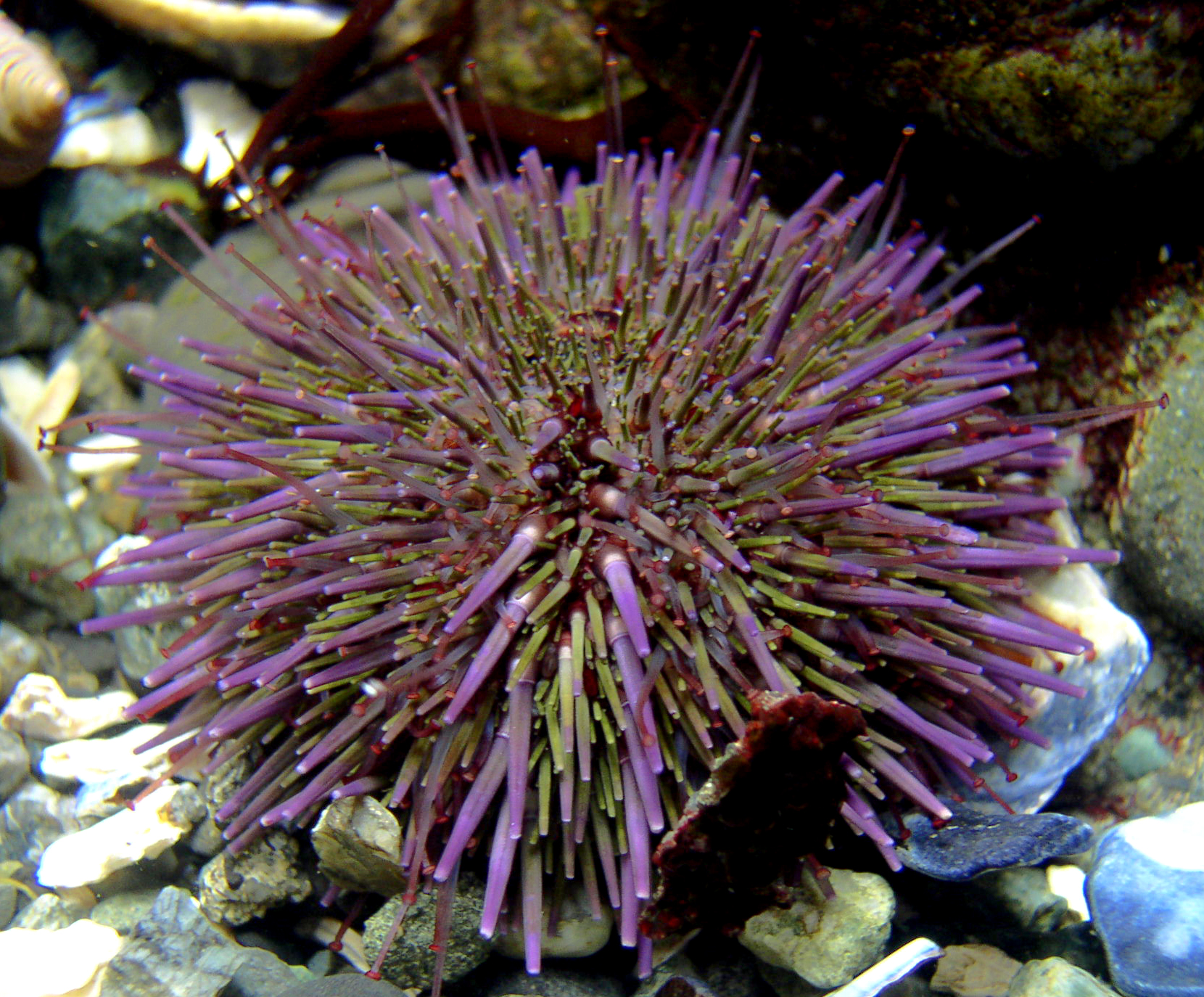Purple urchins continue to plague divers seeking out red urchins throughout California. Blamed on the warm-water Blob, El-Niño and other environmental factors, large beds of giant and bull kelp disappeared, which not only provided food for the red urchins, but contributed to plump egg skeins headed for markets.
The absence of the kelp led to the decimation of the sea star, a key predator that keeps populations of purple urchins in check. With the lack of predators and their hardy scavenging characteristics, purple urchins can thrive on a nearly naked seafloor and get by on a fraction of the nutrients required by red urchins and other critters.
“The purple urchins eat all of the kelp, which leaves nothing for the red urchins to eat,” said Josh Russo, president of the Watermen’s Alliance in Suisun City. The starving red urchins don’t produce marketable roe, and processors stop buying, Russo noted.
Since 2018, the purple urchin population explosion and the resultant “urchin barrens” have attracted supporters for their eradication in the form of grants. In total, the effort to remove the so-called purps garnered about $130,000, which included private donations and contributions from the Mendocino County Fish and Game Commission, the Sonoma County Fish and Wildlife Commission and a raffle put on by Matt Mattison of Norcal Underwater Hunters.
“It was enough that we hired nine commercial boats to dive on any diveable day,” said Russo, adding that recreational divers partnered in their efforts.
Though the task of eradicating purple urchins on a statewide scale would be impossible, the diving project captured 1.2 million of the critters, which were ground up and sent to a regional composting facility.
“We proved that we can clear a cove and that we can protect a cove and keep the purple urchins from coming back,” said Russo. “The idea is that we can clear several coves and re-establish the kelp.”
As for the coveted red urchins, divers in 2018 harvested 1,465 metric tons at average ex-vessel prices $1.76 per pound for fleet revenues of $5.70 million according to data from PacFIN.
In 2015, the year before the one-two punch of El Niño and the Blob, divers harvested 3,847 metric tons. Even though ex-vessel offers came in at 86 cents per pound, fleet revenues hit $7.31 million.







